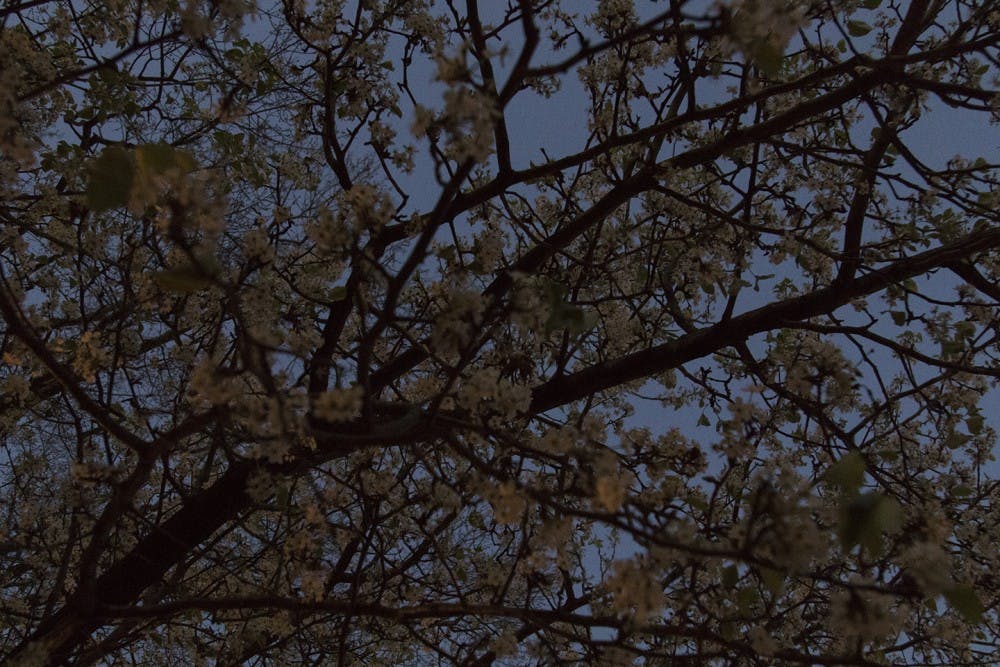Despite what the groundhog predicted last month, it seems that spring has come early. In a rise in temperatures that certainly has nothing to do with climate change, the past few weeks of February have felt more like May, allowing everyone to spend more time outdoors. However, the 70-degree days also bring an old enemy: sticky, yellow pollen discharged from the blooms of the dread Bradford pear tree.
Contrary to its name, the Bradford pear has absolutely no purpose as a tree. The invasive species originated in China, and was brought to the U.S. by the Department of Agriculture in 1964. The fruit it produces from its white blooms are inedible to humans, and the tree is very successful in its ability to survive and reproduce. So successful that it has the potential to become an ecological disaster in the next few decades. As an invasive species, the Bradford pear is notorious for outcompeting larger hardwood trees that take longer to reproduce, acting like a weed that takes up room and nutrients before other plants can. For those who don’t know, the largest old growth bottomland hardwood forest in the Southeastern United States exists just outside Columbia in Congaree National Park.
The Bradford pear’s 20-year lifespan is mainly due to its weak branch structure, as it is resistant to many diseases, which is a feature that seems to be tailor-made to damage houses and down power lines. They can survive in a large variety of soil types and textures, and the recommended disposal of them is to literally grind them up and spray whatever is left with herbicide to prevent the tree from showing up again.
And the absolute worst thing? They smell. Really bad. The stench of the cursed tree has been compared to a harsh chemical smell to dead meat and even semen. Isn’t that the smell you want to wake up to in your bright suburban neighborhood, or maybe strolling through your college campus?
The Bradford pear is the tree version of kudzu. It grows very quickly, chokes out local plants and is very hard to kill. So why don’t we treat the tree like the vine? Well, the Bradford pear is most commonly used as a decorative tree in neighborhoods and around cities, mainly due to its symmetry and brilliant white blooms. Its aesthetics have given it new life as a tree used in neighborhoods and parks for decoration.
My solution is simple: cut them all down immediately.
It is unacceptable to me that such an invasive species is allowed to exist openly in such close proximity to a rare type of hardwood forest. The pollen they create is irritating and messy, caking the whole of our state in its nefarious yellow tinge. I think it's time we do something about it, for the sake of Congaree National Park and our own noses.

